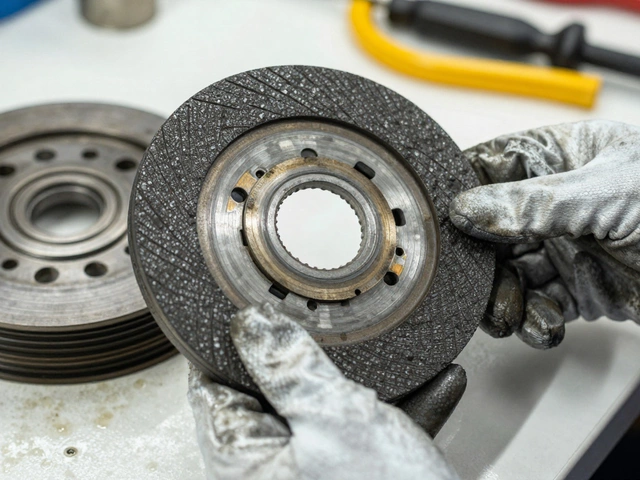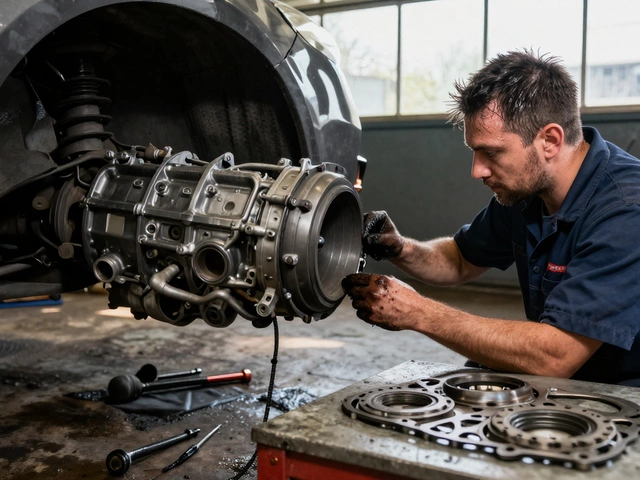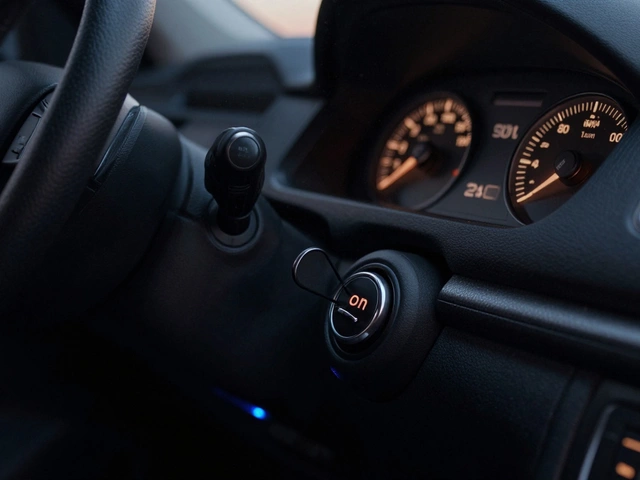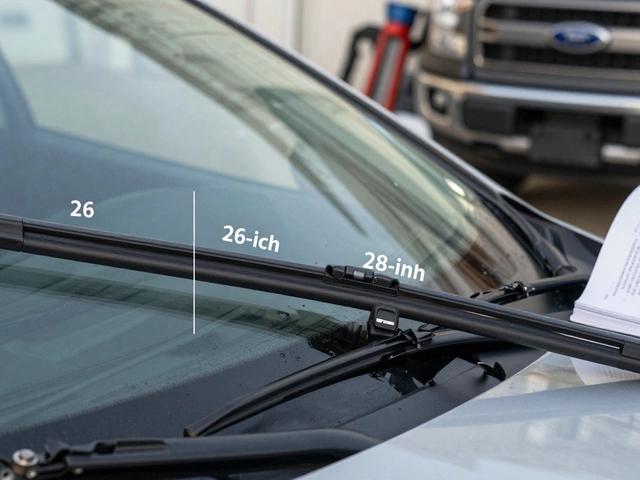When it comes to enhancing your car's performance and giving it a distinctive roar, a Catback exhaust system is often the go-to choice for enthusiasts. These systems don't just change the sound of your vehicle; they can also lead to improvements in horsepower, efficiency, and overall driving experience.
In this article, we'll delve into what exactly a Catback exhaust system entails. Whether you're a seasoned gearhead or a newbie in the world of car modifications, you'll find valuable insights into how these systems function and why they might be the perfect upgrade for your ride.
- Introduction to Catback Exhaust Systems
- Components of a Catback System
- Benefits of Installing a Catback System
- Installation Tips and Considerations
- Common Misconceptions
- Should You Upgrade?
Introduction to Catback Exhaust Systems
If you’ve ever found yourself captivated by the deep rumble of a high-performance vehicle as it rolls by, there’s a good chance a Catback exhaust system is behind it. These systems have long enchanted both automobile enthusiasts and casual drivers alike, offering not only a unique auditory experience but also tangible performance benefits. A Catback system, named so because it begins at the catalytic converter and runs back through the tailpipe, is more than just a flashy upgrade. It’s a pivotal part of many aftermarket modifications, providing an accessible and often cost-effective way to increase horsepower and torque.
At its core, a Catback exhaust system replaces the stock components of the exhaust system from the catalytic converter to the tail end. This typically includes the mid-pipe, muffler, and exhaust tip. The primary aim is to enhance exhaust flow, which can in turn lead to better engine performance. Because factory exhaust systems prioritize quietness and emissions, they can often inhibit optimal airflow. Upgrading to a performance Catback can alleviate these restrictions, allowing the engine to breathe more naturally and effectively. In the vibrant world of automotive enhancements, the art of balancing performance with compliance is what sets a quality Catback system apart from the rest.
According to auto expert Chris Meany from Auto Express, "A good quality Catback exhaust system can potentially unlock an additional 5-10% increase in power, depending on the vehicle and specific system installed." This statement highlights the relative ease with which enthusiasts can boost their vehicle's abilities, often without venturing into more invasive modifications. The choice of materials, such as stainless steel or aluminized steel, as well as the specific design and brand, can all affect the efficiency and output of the system. Many drivers opt for these systems to also enjoy the aesthetic appeal, as the polished tips and aggressive styling can significantly enhance the look of a vehicle.
It’s important to note that catback systems can vary widely depending on vehicle type, make, and model. This means one system that works wonders on a coupe might not necessarily perform the same on a truck or SUV. Consulting with a professional and thorough research is crucial. There are also regulations in place regarding noise emissions, especially in urban areas, which require attention to ensure that modifications remain road-legal. But once you navigate these factors, the result is a more dynamic and spirited driving experience that can be felt with each tap of the accelerator.
Components of a Catback System
A Catback exhaust system is an assembly of parts that starts at the catalytic converter and runs all the way to the exhaust tip. It's derived from the words "catalytic converter" and "back", denoting everything after that crucial piece. This part of the system is critical, as it influences both car performance and acoustic output. It includes several components, each playing a unique role in the system's functionality. The first component is the mid-pipe, which connects directly to the catalytic converter. Depending on the vehicle, you might find this pipe configured as an 'H', 'X', or straight pipe. Each type impacts the exhaust flow differently, affecting both performance and sound.
Another essential part is the resonator, which works to fine-tune the sound of the exhaust before it reaches the muffler. The resonator is designed not just to dampen noise but to alter its frequency, ensuring that the sound is pleasing to the human ear. While not all Catback systems include a resonator, many high-performance setups do, as they offer more control over the exhaust's acoustic nature. The muffler, a critical component, serves to significantly reduce the overall noise output of the exhaust system. Mufflers in Catback systems are often tailored to produce distinct tones that performance car enthusiasts crave.
You'll also find exhaust tips, which, although largely cosmetic, have a part to play in shaping sound. Made from stainless steel or chrome, these tips come in various shapes to match the driver's aesthetic preferences. The choice of exhaust tip doesn't significantly alter performance but can add a sense of personalization to a vehicle's appearance.
As noted by Car and Driver, "Investing in a quality Catback exhaust is not merely about sound; it involves a holistic enhancement of vehicular performance." This sentiment underscores the necessity of a well-coordinated Catback system for those seeking to optimize their driving experience.
All these components are typically joined using mandrel bends to ensure unimpeded airflow. In contrast to cheaper exhaust systems that use crush bending and reduce pipe diameter at bends, mandrel bending doesn't restrict airflow, maintaining consistent diameter through corners. This is crucial in performance vehicles, as it minimizes backpressure, allowing exhaust gases to escape more freely, thereby improving engine efficiency and power output.
When contemplating a switch or upgrade to a Catback exhaust, understanding these components and their functions can lead you to a system that not only increases your car's performance but also tailors the sound to suit your personal style. Because in the world of performance cars, sound is just as vital as speed, if not more.
Benefits of Installing a Catback System
Investing in a Catback exhaust system can transform your driving experience by enhancing both performance and aesthetics. One of the primary benefits enthusiasts often cite is the noticeable improvement in horsepower. By allowing greater airflow, these systems reduce engine backpressure, which can lead to an increase in engine efficiency and power output. It's a bit like a runner taking deeper breaths instead of shallow gasps; the engine just feels more alive.
Another significant advantage is the improved sound profile. Unlike stock exhausts that aim for quiet, subdued operations, Catback systems offer a deep, resonant tone that car enthusiasts love. It's not just about noise; it's about tuning your vehicle's acoustics to reflect its personality. Many drivers find that the acoustic feedback provides a different kind of driving thrill and more awareness of engine behavior. Performance aside, many car owners are drawn to Catback systems for their sleek, aesthetic appeal under the vehicle. Made from stainless steel or aluminized steel, its long-lasting nature ensures durability even in harsh conditions.
Beyond the thrill and aesthetic, a well-installed Catback exhaust might offer improvements in fuel efficiency. This occurs when the reduction in backpressure allows your engine to breathe more freely, making better use of the fuel-air mix. While gains in fuel economy are typically modest, they add up over time, enabling both performance benefits and long-term cost savings.
"A good exhaust isn't just about the volume, it's about refining the voice of your engine," claims renowned auto enthusiast Jay Leno, highlighting the nuanced approach to choosing the right system.Furthermore, installing a Catback system often increases the resale value of a vehicle. Many buyers perceive the presence of such a system as an indication of good maintenance and a passion for performance. This can lead to better offers if you ever decide to part ways with your beloved ride.
In terms of statistics, the benefits can be quantified in various ways. For instance:
| Benefit | Percentage Increase/Decrease |
|---|---|
| Horsepower | 5-10% increase |
| Fuel Efficiency | 2-5% improvement |
| Resale Value | 5-15% increase |

Installation Tips and Considerations
Installing a Catback exhaust system is a thrilling adventure for many car enthusiasts, allowing you to unleash the potential of your vehicle while personalizing its sound and performance. However, there are several key points to consider to ensure a seamless process. Begin by choosing an exhaust system that is specifically designed for your vehicle's make and model. This compatibility is crucial as an ill-fitted system won't deliver the desired performance gains or sound enhancements. It's also essential to gather all the necessary tools before starting the installation. This typically includes a socket set, jack stands, and penetrating oil to help ease stubborn bolts.
Another aspect of the installation involves the removal of your old exhaust system. Make sure your car is securely lifted with a jack and stands before you begin. This step is not only necessary for safety but also provides ample space for maneuvering under the vehicle. Often, rusted or tight bolts can be a challenge, so apply penetrating oil and let it sit for a few minutes before attempting to loosen them. Proper removal ensures a smoother fit for your new Catback exhaust. There's also the option of seeking professional installation if you're unsure about the process, which can prevent mishaps and provide peace of mind.
Once the old system is removed, aligning the new system is vital before securing it in place. It's advisable to loosely fit all components first to ensure proper alignment and fitment before tightening everything down. This helps avoid any misalignment that can lead to leaks or undesired vibrations. Aligning the pipes and mufflers correctly ensures that the exhaust gases flow efficiently and deliver the expected boost in performance.
"It is always wise to double-check the fitment and alignment of your Catback exhaust before finalizing the installation, as a small misalignment can lead to major performance inefficiencies," advises Mike Johnson, an automotive expert and author.
Another important consideration is heat management. Make sure that the new exhaust system is mounted at a safe distance from heat-sensitive components under your vehicle. Exhaust systems can reach high temperatures, and placing them too close to certain parts can cause damage over time. Besides the physical installation, it's also essential to do a final check to ensure that all bolts and clamps are tightened correctly to prevent leaks.
Once everything is secured, it's time to test the system. Start your car and let it idle initially before taking it for a drive. Listen for any unusual noises that could indicate an issue with the system. This initial test is essential to identify any minor adjustments that may be necessary for optimal performance. Even though the DIY method of installing a Catback exhaust is attractive due to its cost-effectiveness, it's important to recognize your own skill limits. If any part of the installation feels uncertain, consulting a professional is always an option.
Common Misconceptions
One of the biggest misunderstandings surrounding Catback exhaust systems is their complexity and perceived negative impact on vehicle longevity. Some may believe that modifying an exhaust system can lead to manifold engine problems or quicker wear and tear. This couldn't be further from the truth. A properly installed Catback system, especially one chosen and fitted for a specific vehicle model, can harmonize with the engine’s natural performance characteristics and should not cause damage when maintained correctly. With today's advanced manufacturing techniques and materials, modern Catback systems boast resilience and durability that keep pace with the life expectancy of the vehicle itself.
Another frequent misconception is the erroneous idea that these systems are only for boosting noise levels. While it is undeniable that a Catback exhaust alters the acoustic profile of a vehicle, it often does so in ways that are much more complex. For instance, by optimizing the flow path of exhaust gases, a Catback can enhance the engine’s efficiency and power output. The sound is not merely louder, but more refined, contributing to a richer driving experience. According to experts at Car and Driver, "The improvements in airflow can potentially translate into faster acceleration times and marginal fuel efficiency gains."
Some drivers erroneously assume that installing a Catback system can void the vehicle's warranty. This notion is often born from misinterpretations of what modifications are considered acceptable by manufacturers. While each brand and model may have varying policies, many factories are allowing such non-invasive alterations, providing they are installed professionally without tampering with core engine functions. Furthermore, several aftermarket manufacturers offer warranty-compliant options, making it easier for enthusiasts to enhance their vehicles without fearing repercussions.
It's also worth addressing the idea that all Catback exhaust systems are alike, which is far from accurate. The design, material quality, and engineering behind the systems can vary significantly. Enthusiasts should research the best fit for their specific make and model to ensure the intended performance enhancements are achieved. A well-researched purchase can translate into a wise investment towards making any drive more exhilarating and unique. Not all brands deliver the same benefits, and due diligence is necessary to capture the ideal balance of performance and sound.
Finally, the belief that such systems reduce a vehicle’s practicality by requiring constant adjustments or care is overstated. A Catback system is designed to be a set-and-forget upgrade, with the same maintenance requirements as the vehicle's original parts. Routine checks during regular service intervals are sufficient to keep things running smoothly. Any car part requires care and attention, and an upgraded exhaust system is no exception; with proper upkeep, drivers can expect several years of dependable use.
Should You Upgrade?
Determining whether a Catback exhaust system is the right upgrade for your vehicle requires careful consideration of several factors. Firstly, think about the primary reason for your interest in upgrading. Are you looking to enhance your car performance, achieve a unique sound, or perhaps both? Understanding the core motive can help guide your decision and align it with your expectations. Secondly, it's crucial to assess your current vehicle specifications. Some cars inherently benefit more from Catback systems, primarily in terms of power gains and exhaust flow efficiency. Typically, turbocharged engines experience noticeable improvements, but naturally aspirated engines can also enjoy boosted performance. A common myth is that all vehicles will significantly increase in horsepower, but the truth is the result can vary based on existing configurations.
A careful evaluation of legal regulations and warranties is another crucial step. Many regions have noise ordinances or emission standards, and non-compliance could result in penalties. It’s also worth noting that some manufacturers might void warranties if aftermarket parts like a Catback system are installed. It's essential to do your homework here, diving into both local laws and the fine print of your warranty. Consider too your personal enjoyment in terms of vehicle sound. A Catback exhaust can turn a mild-mannered ride into a throaty beast, which for many is a major draw. However, for others who prefer quiet commutes or frequently travel longer distances, the increased noise level might become tiresome. As the automotive expert John Donovan once put it,
"Upgrading an exhaust is about personal preference as much as it is about performance gains."
Cost is another decisive factor when contemplating an upgrade. Investing in a quality Catback exhaust can be expensive, involving not only the price of parts but potential installation fees if not self-installed. However, the long-term benefits should also be considered, such as improved fuel efficiency and potentially increased resale value for car enthusiasts. Additionally, think about the commitment to maintenance and upkeep. While Catback systems are generally low-maintenance, regular check-ups can ensure optimal performance and longevity. Many purists enjoy the deep dive into engine dynamics and adjustments. Yet, others might find the ongoing oversight burdensome. Lastly, consider community feedback and reviews. Engaging with forums, local clubs, or even seeking professional opinions can provide insight you might not have considered. Real-world experiences can help guide your decision, offering perspectives on everything from brand reliability to installation hurdles and sound profiles. With these reflections, you'll be better equipped to decide if making the switch to a Catback exhaust system aligns with your driving desires and lifestyle goals.








